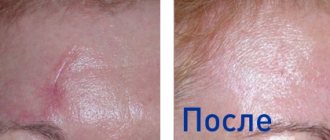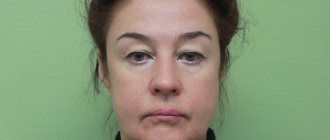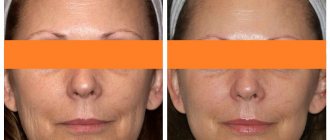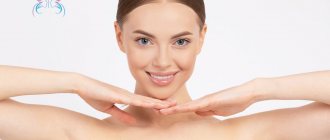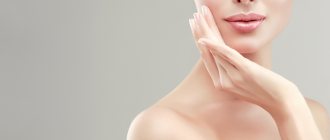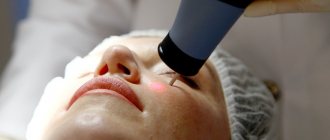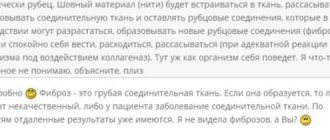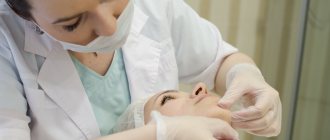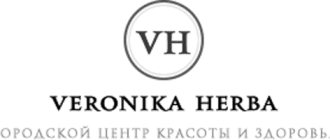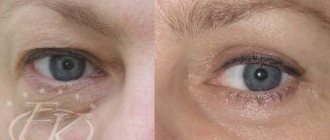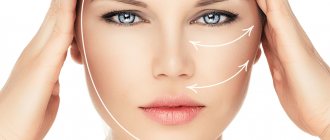From this article you will learn:
- The essence of a facelift with mesothreads
- Indications and contraindications for face lift with mesothreads
- Benefits of a facelift with mesothreads
- 4 stages of facelift with mesothreads
- The result of a facelift after mesothreads
- Side effects of a facelift after mesothreads
- Care before and after facelift with mesothreads
- Combining a facelift using mesothreads with other procedures
A facelift after mesothreads gives a visible result, which is what accounts for the popularity of this procedure. Cosmetologists are constantly inventing the latest technologies to combat age-related skin changes. However, it was mesothreads that revolutionized the beauty industry.
Of course, like any procedure, there are indications and contraindications, as well as strengths and weaknesses. Care before and after the session plays an important role. Moreover, the result after mesothreads can be enhanced by other cosmetics.
The essence of a facelift with mesothreads
Mesothreads are used in cosmetology in the thread lifting procedure. Fibers treated in a special way are placed under the skin, due to which it stretches less and becomes more elastic. The procedure helps to correct the oval of the face and is aimed at tightening the skin in the cheeks and nasolabial folds.
The threads contain polydioxanone, and their surface is coated with polyglycolic acid. The materials have been used in medicine for a long time, and their effect on the human body has been well studied. You don't have to worry about safety. Mesothreads are used not only in cosmetology, but also in other areas, for example, in eye surgery.
Since the procedure is based on acupuncture, in addition to its direct purpose, it also promotes relaxation.
Recommended articles on the topic:
- Mesothreads for face lift: pros and cons of the procedure
- Beauty injections: types of drugs, reviews
- Placental therapy is the secret of eternal youth
The cosmetic threadlifting procedure, or bioreinforcement, is not only a modern way to restore youthful skin, but also a real revolution in aesthetic cosmetology, which includes several rejuvenation techniques:
- Botox injections;
- the use of oxygen-based cosmetics that replenish the lack of active substances in the skin to prolong its youth;
- laser lifting;
- the introduction of special gels that fill the voids and give elasticity to the epidermis.
One of the advantages of a facelift using mesothreads is its speed. The procedure takes no more than an hour, so it can be performed at any convenient time without disturbing your normal daily routine.
Indications and contraindications for face lift with mesothreads
The result of a lift after mesothreads is a fresh, rejuvenated face. Threadlifting cannot get rid of deep wrinkles and folds, but they will become less noticeable. The procedure is recommended to be carried out at a time when the skin has not yet lost its natural elasticity, but the first age-related changes are making themselves felt.
In what cases are mesothreads used to correct the oval of the face:
- the area under the chin and cheeks are drooping;
- the nasolacrimal groove became noticeable;
- vertical and horizontal wrinkles have appeared on the forehead that Botox injections cannot remove;
- there are folds in the ear area;
- creases and lines around the eyes have appeared (periorbital wrinkles);
- the skin of the face became flabby, ptosis of soft tissues appeared;
- folds appeared near the mouth, located perpendicular to the lips (purse-string wrinkles);
- a nasolabial fold has formed;
- there are wrinkles between the lip and chin;
- noticeable drooping of the eyebrows.
Experts in the field of cosmetology say that the first need for a facelift with mesothreads arises at the age of 35. But in order to get ahead of age-related changes, the thread lifting procedure can be started at the age of 25–26 years.
Mesothreads are introduced using ultra-thin conductor needles, allowing for high precision. Thanks to this, vector lifting and 3D facial modeling can be performed without surgical methods. To obtain more visible results, the bioreinforcement procedure is carried out using filler gels.
The use of mesothreads is not limited to just one area of the face. They are able to improve the entire body: tighten the skin of the thighs, buttocks, knees, remove ptosis on the arms, abdomen and other parts of the body. Lifting occurs with threads up to 9 cm long.
It is better to refuse the procedure if:
- pregnancy and lactation;
- diabetes mellitus;
- allergies to drugs;
- bacterial and viral diseases;
- disorders in blood clotting parameters;
- large skin thickness;
- severe sagging and inflammatory processes of soft tissues;
- oncology.
Benefits of a facelift with mesothreads
The benefits of a facelift using mesothreads are confirmed by facts. There are 7 pieces of evidence in favor of thread lifting in the fight against age-related changes:
- Research conducted over many years has confirmed the safety of the mesothread material. Their composition is hypoallergenic and compatible with human tissue. When the procedure is performed by a specialist, the risk of side effects is eliminated, and contraindications are minimal.
- Bioreinforcement is accompanied by local anesthesia.
- The result of the procedure is equivalent to chemical lifting.
- Ultra-thin mesothreads are completely invisible under the skin.
- Threadlifting leaves no marks on the face, damage is minimal, and puncture sites quickly disappear.
- If you trust the professionals, then you don’t have to worry about micro-bleeding that can occur if the threads are inserted incorrectly. Even on the thin skin of the eyelids, there will be no hematomas, which cannot be said about the blepharoplasty procedure.
- Bioreinforcement takes about an hour, after which you do not need to be in the hospital and long-term rehabilitation is not required.
- The effect lasts from 1.5 to 3 years.
Thread lifting - a doctor about complications after mesothreads
| Mesothreads | ||
| Service code | Name of service | price, rub. |
| A16.01.026.001 | Linear mesothreads Lead Fine Lift (M) PDO (1 pc.) Indications: displacement of the oval line, ptosis, nasolabial folds, double chin | 1500 |
| A16.01.026.002 | Twisted thread Honey Derma Thread (Screw (S) 1 pc. | 1800 |
| A16.01.026.003 | Double twisted mesothread Honey Derma Thread (Double-SCREW (DS) 1 pc. | 2000 |
| A16.01.026.004 | Mesothread with notches (Single COG) 1 pc. | from 3000 |
| A16.01.026.005 | Mesothread with notches (Double COG) 1 pc. | from 4500 |
| A16.01.026.006 | Mesothreads with notches Lead Fine Lift (3D threads) | 5500 |
| А16.01.026.007 | Mesothreads with notches Lead Fine Lift (4D threads) | 7500 |
| A16.01.026.008 | Dermafil Free Floating threads (reinforcement and lifting, elimination of ptosis) 1 thread - 12 cm | 7500 |
| A16.01.026.009 | Dermafil Double Needle threads (eyebrow line and neck lift) 1 thread - 12 cm | 21000 |
| А16.01.026.010 | Dermafil iNeedle threads (weakly defined chin and jaw line, double chin, neck lift) 1 thread - 12 cm | 21000 |
Mesothreads (Thread lifting) have reached the peak of popularity in recent years. Patients are attracted by the high efficiency of the procedure and lasting results, as well as the short recovery period. But it must be remembered that even such a low-traumatic and well-studied technique involves possible complications. What complications can there be? How to deal with them? In today's interview we will talk about complications after the thread lifting procedure with Alexander Stepanov, candidate of medical sciences and plastic surgeon.
Question:
Procedures associated with the installation of mesothreads allow for a small number of punctures, and the procedures themselves are not considered too traumatic. What causes complications after thread lifting?
Many different mesothreads can help us restore beauty and youth. We install threads that are absorbable, permanent threads, notched and smooth. All procedures carried out using these types of mesothreads are truly considered low-traumatic. This means that in order to cause harm to the patient during such a procedure, it is necessary to seriously disrupt the technique of manipulation. Of course, some side effects that are the body’s natural reaction to injury cannot be called serious. Today we will talk about the most common complications after a thread lifting procedure, which are temporary and more serious.
Question:
What complications may be temporary?
Temporary complications are those that accompany almost any cosmetic procedure. Similar complications can be encountered after contouring, mesotherapy and even peeling. These side effects in most cases do not require specialized treatment and disappear on their own after some time.
For example, minor hematomas appear if small vessels have been damaged. Surely you have heard more than once that it is not recommended to carry out most procedures during menstruation and in case of bleeding disorders. Such advice is due to the fact that in the listed cases, bruising after the procedure is more likely. Healing of bruises does not require any medication. You just have to wait and the bruises will resolve on their own. If it is necessary to urgently heal bruises, the doctor may recommend ointments, gels and some hardware manipulations.
Question:
As far as I know, one of the most common complications is the appearance of swelling. Let's say a few words about this complication.
Edema is a normal tissue reaction to intervention. After a thread lift procedure, your face may swell unevenly. Most often, this complication occurs in people with large faces and an impressive amount of subcutaneous fat in the facial area. The amount of edema directly depends on the amount of installed material. Swelling, as a rule, disappears after a week or two, but may persist a little longer. Healing can be accelerated with the help of hardware procedures and certain medications.
Question:
Another fairly well-known complication is uneven skin texture. In what cases does this complication appear, and how to deal with it?
Minor unevenness of the skin appears due to tissue tension if an excess amount of material is installed. In rare cases, irregularities occur in the areas where the needle is inserted and withdrawn. Again, this complication does not require any treatment and disappears on its own in 7-10 days. If the unevenness does not disappear after 2 weeks or more, you should consult a cosmetologist.
Question:
Since we are talking about an excessive amount of material, let us remember hypercorrection, when the area where the threads are inserted is overly pronounced. What to do in this situation?
Another case when it is more rational to take absolutely no action. It is necessary to understand that while swelling remains after the procedure, the tissues have not yet taken their final shape. It is better to wait until the end of the recovery period - 2-3 weeks - and then evaluate the result.
Question:
I heard about another temporary side effect - disturbances in facial movements. How long does this complication last?
Perhaps this is one of the most harmless side effects of all those that we have listed today. Most often, impaired facial expressions are associated with the effect of an anesthetic drug. As soon as the anesthetic ceases its effect, the previous activity of facial expressions is restored. Also, facial expressions may change due to swelling, but they also go away on their own. If you mean impaired facial expression due to nerve damage, then such phenomena are extremely rare and unlikely.
Question:
Let's move on to more serious complications that do not disappear on their own. As far as I know, in the vast majority of cases they require appropriate treatment and intervention by a specialist.
Yes that's right. If the complications that we will talk about now appear in the patient after the procedure, most often the threads have to be removed. These complications are much less common than the temporary ones we talked about earlier. Serious complications are associated with non-compliance with the technique of installing threads and failure to pay due attention to antiseptic rules. Serious side effects are also possible if the wrong material for implantation was chosen.
There are ambiguous situations when actions aimed at combating complications can be completely different - from the use of medications to the complete removal of suture material. For example, allergic reactions may be a response to the anesthetic or any other agents used during the procedure. The human body rarely reacts to the threads themselves, since the material has been tested by time and clinical trials. In cases where the allergy is caused by an anesthetic, the problem is solved with antihistamines. Of course, in case of anaphylactic shock, the patient should receive urgent assistance that does not involve delay.
If, nevertheless, the allergic reaction is caused directly by the suture material, the doctor must remove the material from the tissue. I repeat that this situation happens extremely rarely when low quality material was used.
Question:
What else can cause serious complications?
In connection with your question, I remembered the infectious-inflammatory reaction of the body. The occurrence of such a complication may be associated with non-compliance with the basic rules of the procedure. The room in which thread lifting takes place must be specially equipped, sterile material must be used, and hands must be washed promptly. Complications are often associated with the fact that the doctor did not receive enough information at the initial consultation about existing diseases and recent operations. This may also be the fault of the patient who considered it unnecessary to mention any disease or procedure.
Here it is necessary to remember that if there is negligence on both sides, quite serious consequences are possible. To combat the infection, antibiotics are usually used, and in severe cases, the material is removed altogether.
Since we're talking about more serious relationships, let's look at facial expression disorders from the other side. In most cases, this can be a temporary complication, but very rarely the violation of facial movements is permanent and is caused by non-compliance with the technique of installing the material along vectors. If the motor nerves are damaged, facial expressions are significantly impaired. This complication does not go away on its own. In this case, the threads are removed. But you should not forget that such a situation cannot happen if the specialist followed the correct trajectories for installing the material.
Question:
I have repeatedly read on forums about the phenomena of thread migration. How common are such complications and what causes their manifestation?
Thread migration is possible when installing smooth mesothreads, which do not have notches and can move from the target installation point. For example, I sometimes have patients with migrated gold threads that gather in a ball in a certain area. If the threads migrate, they may show through, and in rare cases there is a risk of the skin being pierced. Of course, in this case they need to be removed. I still advise my patients to install threads with fixators. Fixation systems may include cones, notches, and others. The choice of material with fixation is a kind of guarantee that the threads do not migrate in arbitrary directions and that undesirable consequences will not occur.
Bleeding is also quite common as an independent complication. Contouring the material in most cases is associated with too superficial installation of the threads, when the material begins to literally “peek through” the skin. This is purely a matter of technique for installing the material. In simple terms, different types of threads require installation at different depths. So, if the peculiarity of the threads is not taken into account, side effects such as contouring may occur. If, however, the threads were installed incorrectly, the suture material is in most cases removed. In rare cases, parts of the threads may be removed.
Another phenomenon that modern medicine has been able to successfully cope with is the appearance of dimples (a kind of “retraction” of the skin). Specialized twin needles have been developed that form a single point. With the help of such material it is possible to immediately reach the required depth. Even if such a complication does appear, most often it disappears on its own or after a special massage. In some cases, it is necessary to separate the skin in the area where the dimple is formed.
Question:
Now the complications are clear to both me and our readers. Last question: how are threads removed?
Removal of threads, despite the huge number of myths associated with this procedure, is done very delicately and does not cause tissue rupture with subsequent formation of scars. Remove the thread using a special small hook or needle with a curved end. The procedure is performed under local anesthesia. It is easiest to remove the thread when the tissue is inflamed. In such a situation, the thread is perfectly visible on ultrasound, and the tissues themselves are somewhat loose. In this case, the thread is simply pulled out. If other side effects occur that require removal of the suture material, the thread can be cut and pulled along the notches without tearing the tissue in any way. The number of punctures required depends on the type of thread.
Difficulties in removing material may arise when complications appear several years after the installation of the threads, when the thread is already a capsule and its fixation is strong and reliable. But even in this case, a qualified specialist will cope with the situation. Thus, the thread lifting procedure is valued not only because of its high efficiency, but also because most of the complications resolve on their own, and more serious complications can be treated and corrected. In extreme cases, the suture material is simply removed without any negative consequences for the human body.
Reviews about thread lifting
In my opinion, all complications from mesothreads arise when the procedure is performed not in a licensed clinic, but in a salon by a “master.” I myself saw how they do Botox in a salon, and then they talk about the horrors of the drug. I only go to proven clinics where I have friends or know doctors. I made mesonithreads 2 years ago. The effect lasted for a year and a half. Now my doctor is on maternity leave, but by winter I should be back and will go again.
A friend told me that she made some “golden” threads about 15 years ago and the experience was unsuccessful. The result is asymmetry and can only be corrected surgically. Now, judging by the reviews, everything is different.
It was necessary to remove nasolabial folds and small cheeks. I was choosing between fillers and mesothreads. I went for a consultation with a cosmetologist at the medical center on Korolenko 2. The doctor, after listening to me, advised me to do mesothreads. They are anti-allergenic, dissolve over time and the effect lasts longer. The procedure with consultation took an hour and twenty minutes. I'm happy with the result. There are no side effects if you strictly follow your doctor's recommendations.
The result of a facelift after mesothreads
After the introduction of mesothreads, the skin becomes denser, the face and other parts of the body are rejuvenated and look more aesthetically pleasing. Bioreinforcement makes a person more self-confident, he feels more attractive. But mesothreads also work after injections.
Polydioxanone fibers dissolve and release special substances that trigger regeneration processes in the skin. This is possible because of what happens:
- saturation of cells with oxygen;
- natural synthesis of collagen and elastin;
- stimulation of blood circulation;
- providing tissues with nutrients.
After the mesothreads disintegrate, water and carbon dioxide remain; the process takes six months. During this time, new connective tissue is formed in their place, which holds the skin in the desired position.
The thread lifting procedure has a beneficial effect on the body. The external effect of mesothreads is immediately noticeable: wrinkles and other skin defects disappear. In addition, positive dynamics are visible in the deep layers of the dermis, where internal processes are stimulated. To obtain a more reliable result, it is advisable to repeat the procedure after 3–4 months.
Side effects of a facelift after mesothreads
In addition to the obvious advantages, any operation has its disadvantages and possible side effects. Facelift with mesothreads is no exception. Among the disadvantages are:
- lumpy skin;
- minor bruises, hematomas and bruises;
- swelling with possible tissue edema;
- pain, possible loss of sensitivity for a short period of time.
The patient may also feel the presence of a foreign body in the tissues, but such sensations only last a day or two.
The success of the procedure largely depends on the professionalism of the doctor and his skills in working with mesothreads. The slightest violation of thread lifting technology can cause adverse reactions and force the patient to deal with negative consequences. Sometimes the situation can only be corrected through surgery. Therefore, when deciding on a bioreinforcement procedure, carefully choose a specialist. The presence of relevant documents and patient reviews of the work done will help to verify his competence.
But don’t be too afraid of side effects and negative consequences. The standard procedure for correcting the oval of the face and other areas is painless and easy.
Thread face lifting is one of the popular procedures in the general concept of rejuvenation, but there is also an increase in cases of complications in thread implantation
Thread technologies are diverse, the difficulties of their prevention and elimination, possible doctor errors - all these pressing issues require a scientifically based methodological basis. The first and extremely important step on this path is the systematization of complications and the causes of their occurrence.
Recently, a new trend has been actively promoted in aesthetic medicine - minimizing invasiveness when solving a variety of problems, that is, achieving greater effectiveness of procedures with less tissue damage and less recovery time for the patient. Thus, when solving the problems of soft tissue ptosis, doctors are increasingly turning to thread lifting, a low-traumatic method that shows very real, pronounced and predictable results. And yet, despite all the successes of thread facial rejuvenation, the issue of complications when using the method is still quite acute.
If we talk about the iatrogenic side of the development of complications of thread implantation, then it is simply necessary to pay attention to the fact that the doctor (cosmetologist, plastic surgeon) when such cases arise, often experiences significant difficulties in terms of timely assessment of the complication, prognosis of its course and possible consequences, sometimes just relying on “everything will work itself out.” This means that the question of classifying complications according to severity could not be more relevant.
Before assessing a complication, it is necessary to identify its cause.
Thread rejuvenation with the use of ligature techniques, like any method of treatment, involves close interaction between three components - the doctor, the patient and the material used (thread + needle). These same components form the so-called triangle of complication factors “PATIENT – DOCTOR – MATERIAL”, each side of which plays its own role in their development. Therefore, in our opinion, we should start with systematizing these factors.
Complications after thread lifting
Classification of complication factors:
“PATIENT” – complication factors related to the patient’s physical condition and behavior:
– failure of the patient to follow the doctor’s recommendations; – age (the older the patient, the more problems when using thread technologies); – overweight, nutritional dystrophy caused by improper diet; – disorders of the immune status (including due to the use of therapy that affects the state of immunity); – existing concomitant pathology (diabetes mellitus, chronic infections, etc.); – smoking; – chronic intoxication (alcoholism, drug addiction). “DOCTOR” – complication factors associated with the insufficient professional level of the doctor: – violation of the protocol for introducing threads; – incorrectly selected thread thickness; – imbalance of thread tension (sometimes the doctor, for fear of reducing the effect, pulls the thread too tightly, especially when working with “heavy”, round faces); – non-compliance with the rules of asepsis and antiseptics, etc.
“MATERIAL” – complication factors related directly to the condition of the threads and needles:
– violation of sterility conditions during production, transportation and storage, intraoperatively; – falsified material.
Having understood the cause of the complication, you need to determine its level and possible outcome, and only then begin to develop treatment tactics. In this article, we will analyze complications of various types during thread face lifting using non-absorbable (permanent) threads with notches (cones, etc.) (classification of threads according to D. A. Gruzdev, see - Characteristics of threads according to the CHRIST classification). We will also offer a unified classification of complications that we have developed according to the level of severity and degree of doctor intervention, which, in our opinion, will provide significant assistance in developing an algorithm for the doctor’s behavior in the event of their occurrence and, accordingly, treatment tactics for the patient. These issues were the subject of a study, the data of which we will present in this material.
Systematization of complications
The study was conducted at our plastic surgery and cosmetology clinic. During the entire period, 525 clinical cases were retrospectively analyzed. Lifting threads with non-absorbable notches, as well as with teeth and cones were used. It should be noted that patients with complications also came to the clinic from other medical institutions. Complications of thread lifting and to identify signs of pathologies associated with them, we developed a program of systemic general clinical research, which included clarification of complaints and a medical examination of the patient, medical history, endoscopic examination, and in addition, ultrasound scanning and bacteriological analysis.
The data obtained in the study made it possible to classify complications according to the level of severity and required treatment.
Complication rates with permanent barbed sutures
I level
Level I complications resolve on their own within 7–10 days and do not require medical intervention. These include:
– large hematomas; – swelling after thread lifting; – pain along the thread, most likely caused by poor fixation of the thread (it “cuts” its way) and/or inflammation; – pain at the site of thread fixation caused by the load on the fixation point; – impairment of motor activity of the muscles of the injection zone due to anesthesia or injury; – impaired skin sensitivity associated with anesthetic injection.
If a level I complication occurs, the recommended medical tactics are to wait and monitor the patient.
However, if swelling appears, you can use physiotherapy (microcurrents with Traumeel), local decongestants and anti-inflammatory drugs (ointments or gels Traumeel, Troxevasin) a day after the procedure. If pain occurs at the point of fixation, in the absence of excessive thread tension, in extreme cases, local application of painkillers and vasodilators is recommended. For pain along the thread, oral NSAIDs can be prescribed.
Photo 1 – facial asymmetry; photo 2 – contouring the thread. · Level II
Level II complications require specialist intervention.
These include:
– facial asymmetry (photo 1); – contouring the thread (photo 2); – pain syndrome associated with thread tension.
According to studies, level II complications occur from the 8th to the 10th day after the procedure and are noted by the doctor during the follow-up examination. During this period, we most often encounter asymmetry and contouring, which require elimination. This can be by physically moving the tissue or filling the groove with hyaluronic acid. Pain associated with thread tension requires loosening the tension.
Level III complications
Level III complications are more serious and require removal of the thread. Occur 1 month after implantation. These include:
– local inflammatory reaction in the area of thread implantation during the rehabilitation period; – distant inflammatory reaction – 3 months after thread implantation (photo 3).
The results of the study showed that the frequency of complications when using non-absorbable threads does not exceed the frequency of ligature complications in general surgery and is 1.9%.
In this article, we will dwell in more detail on the treatment of level III complications as the most severe.
Structure of complications
| Clinical cases | Quantity | Share |
| Total clinical cases | 525 | 100% |
| Cases of level I complications | 52 | 10% |
| Cases of level II complications | 22 | 4% |
| Cases of level III complications | 10 | 2% |
| Total cases of complications | 84 | 16% |
Photo 3 – distant inflammatory reaction; photo 4 – removal of thread.
Level III complications: nature, causes, treatment methods
Level III complications that arise require mandatory removal of the thread (photo 4). Our study confirmed the development of purulent inflammation of the soft tissues of the face during the installation of threads with the formation of microabscesses and pustules 2–3 months after the implantation of threads. We all know from general surgery that such ligature complications in 90% of cases require removal of the thread as an agent that will maintain inflammation. And in some situations, it will contribute to the spread of an infectious agent (bacteria, microbes, etc.) if the material from which the thread is made has a high wickability. Threads with high wicking properties serve as a conductor for infection through the ligature and wound channel. Antibacterial therapy carried out in these cases does not affect the microflora growing on the suture material. Multifilament threads are much more likely to spread inflammation than monofilament polypropylene threads. The immediate cause of inflammation can be: the introduction of an infectious agent into the wound; damage to the hair follicle and sebaceous gland during superficial passage of the thread; hair caught with a thread in a wound; lymphogenous spread of an infectious agent from foci of chronic infection; inflammatory reaction of unknown etiology.
The risk of this complication of thread lifting increases especially when the needle reaches the surface of the skin at the time the thread is inserted.
If a patient from another medical institution seeks help with a complication that has already arisen, then the removal of threads is also complicated by the fact that there are a lot of unknowns: what threads were installed and how, how many of them were used, etc. In case of level III complications, the removal of threads is necessarily accompanied by a conservative anti-inflammatory treatment. Bacteriological research showed that the main causative agent of the infection is Staphylococcus aureus. In the present study, the antibiotic sensitivity of bacteria was determined using the disk diffusion method on a medium. We used discs from Becton Dickinson. The diagnostic panel consisted of 20 antibiotics of various groups. The determination of zones of growth inhibition was carried out on the Osiris device (Biorad, France) using the expert system of the program, which allows taking into account the minimum inhibitory concentration of antibiotics, natural resistance and beta-lactamase activity of bacteria. Throughout the study, we analyzed the culture of punctate (separated pustules) for the content of microorganisms and their sensitivity to antibiotics. The spectrum of microorganisms isolated from the biological environments of patients is presented in the diagram.
Diagram. Spectrum of microorganisms isolated from biological media of patients with level III complications.
It is up to the doctor to prescribe or not prescribe antibiotics, but there is a situation: the risk of developing postoperative infectious complications is less than 2%. The use of antibiotics during “clean” interventions is justified only in cases where the development of infection in the postoperative period poses an immediate threat to the life and health of the patient.
With a conservative approach, you can use broad-spectrum antibiotics, topical antibiotics, washing the wound canal with Betadine, applying locally irritating ointments, as well as physiotherapy. Of course, it is necessary to prescribe drugs that strengthen the immune system.
When choosing an antibiotic, you should be guided by evidence-based clinical placebo-controlled or comparative studies. Currently, the leading positions are occupied by beta-lactam antibiotics, in particular 1-3 generation cephalosporins and inhibitor-protected aminopenicillins. These drugs have found greatest use in the treatment of purulent-septic complications due to their ease of use, resistance to beta-lactamases, low incidence of side effects and toxicity, wide spectrum of activity and relatively low cost.
Conclusions A classification of complications when installing non-absorbable threads with notches, cones, etc. has been proposed, which will serve as a good guide for the doctor when choosing the optimal tactics for managing the patient in the post-procedural period, which allows preventing the development of more serious complications. Based on the results of the study, the main causative agents of infectious complications arising from thread implantation were identified, and modern antibacterial drugs were recommended. Systematization of factors for the occurrence of complications with thread technologies (the triangle “PATIENT – DOCTOR – MATERIAL”) is information that is extremely necessary for a doctor. In our opinion, it contributes to the doctor’s alertness regarding the development of possible complications, that is, more careful work with the patient in the preparatory and post-procedural periods, a more demanding attitude towards his professional level, and stricter control over materials.
Sergey Kruglik, plastic surgeon, candidate of medical sciences, associate professor, head. Department of Plastic and Reconstructive Surgery and Cosmetology, Baltic Federal University. I. Kanta, head of the clinic; Ekaterina Kruglik, cosmetologist, chief. clinic doctor; Clinic of Plastic Surgery and Cosmetology “Attention and Understanding”, Kaliningrad
Care before and after facelift with mesothreads
- What to do before the procedure begins
A few hours before injections with mesothreads, doctors recommend giving up smoking, alcohol and heavy physical activity. You only need to wash your face with cool water.
A week before a facelift with mesothreads, it is prohibited to use products that contain acetylsalicylic acid and aloe vera, as well as take antihistamines. You should not visit a bathhouse, solarium, sauna or expose your skin to extreme temperatures. The above requirements must be met for 7 days after the procedure.
- Recommendations after surgery
Doctors advise chewing actively for 24 hours after a facelift. After the procedure, it is advisable to massage the areas where the mesothreads are located and engage in physical exercise for 2 weeks. Take alcohol, aspirin and anticoagulants in moderation for three days.
Other recommendations:
- To reduce swelling, keep your head at a slight elevation while sleeping.
- When using cosmetics, it is important not to press too hard or rub your face. At least for the first few days.
- You only need to wash your face with filtered water using delicate cleansers, preferably those that contain active oxygen.
- For skin care, you should choose products with a high degree of protection against UV rays.
- It is advisable to use oxygen masks, they help prolong the tightening effect.
- You cannot use hyaluronic rejuvenation for six months after the procedure.
- In order not to accelerate the natural decay of mesothreads, you should avoid strong scrubbing, laser resurfacing procedures and acid peeling.
- It is important to maintain a balanced diet, eliminating or minimizing caffeine, alcohol, sugar, etc.
Bruises from mesothreads. Causes of bluish formations, or hematomas
Many patients dream of having a threadlift procedure without any consequences. But, unfortunately, in some cases, mesothreads create bruises, which is due to the individual characteristics of the patients’ skin. Mesothread bruises after the procedure can be minimized if you first become familiar with the causes of the consequences.
The problematic installation of mesothreads, bruises, photos of which are presented on the OB clinic website, clearly demonstrates the problem. In addition to hematoma formations, patients also experience other unpleasant phenomena:
- the formation of lumps that cannot subsequently be eliminated. While bruises may go away after the procedure, bumps only go away after a long period of time, which upsets clients;
- translucent threads through the skin, which is a mistake made by a specialist;
The resulting bruises after mesothreads in the photo will remind you of the problem for a long time. And to avoid this, we suggest contacting only qualified specialists who work at the OB clinic.
When installing mesothreads, the photo presents bruises in combination with other manifestations as the formation of an “accordion” - a fold that is generally impossible to get rid of. And only the doctors of the beauty clinic will not allow such problems, since they prescribe their patients an examination and test for various reactions, such as allergies.
To prevent bruising after mesothreads, before the procedure, each patient must undergo an examination and consult with a doctor. But the formation of bruises should not always frighten the patient, since in some cases they are a natural process, a reaction over several days.
There is no need to worry about bruises that appear after mesothreads, but it is better to wait until they go away on their own. Experts note that in some cases the patients themselves are to blame for the appearance of bruises. The reason may be poor health, about which clients do not warn doctors. Therefore, it is very important to warn your doctor about health problems such as tumors, chronic diseases in the acute period, pregnancy, breastfeeding, poor blood clotting and other problems. You cannot neglect your health when you can find an alternative solution together with a specialist.
Combining a facelift using mesothreads with other procedures
With the right approach to the bioreinforcement procedure and combining it with other cosmetic operations, incredible results can be achieved. Namely: remove age-related changes, make the skin smoother and more elastic.
The introduction of mesothreads can be combined with the following procedures:
- Mesotherapy. A non-surgical method that uses microinjections of pharmaceutical and homeopathic medicines.
- RF lifting. A rejuvenating procedure based on the impact of radio particles that penetrate the skin and trigger the process of natural restoration of collagen and elastin fibers. The laser peeling procedure must be avoided for at least 30 days.
- Contour plastic . Correction of skin macrorelief and its defects using fillers.
- Laser lifting. Another non-surgical method that smoothes wrinkles, improves skin tone, stimulates cell renewal and tightens the oval of the face.
A facelift with mesothreads is a modern procedure that is at the intersection of surgery and cosmetic facial care. Threadlifting helps tighten tissues and correct the oval of the face, smooth out wrinkles, and also noticeably lighten the skin. And due to the fact that the threads enhance the synthesis of collagen and elastin, the skin is filled with moisture and looks younger. Installing mesothreads helps combat the signs of aging, remove fine wrinkles and reduce deeper wrinkles. The effect of the procedure lasts up to three years. After this time, bioreinforcement can be repeated, paying attention to other areas.
Why clients choose Veronika Herba Beauty and Health Center:
- This is a beauty center where you can take care of yourself at a reasonable cost, while your face and/or body will be treated not by an ordinary cosmetologist, but by one of the best specialists in Moscow. This is a completely different, higher level of service!
- You can receive qualified help at any time convenient for you. The beauty center is open from 9:00 to 21:00, seven days a week. The main thing is to agree with your doctor in advance on the date and time of your appointment.
Sign up for a consultation with a specialist by phone +7 (495) 085-15-13
, and you will see for yourself!
How do 4D mesothreads work?
4D Mesothreads consist of hypoallergenic and absolutely safe material - polydioxanone. Using the finest needles, threads are implanted under the skin and create a frame that smoothes out existing wrinkles and prevents the appearance of new ones.
The entire procedure takes approximately 30 minutes. Immediately after the session, a lifting effect is visible, which intensifies every day for several months. Later, the threads dissolve, but a natural framework of collagen produced during this time remains under your skin. It keeps the skin toned for another 2-2.5 years.
Are you choosing between mesothreads and surgery?
Let's compare mesothreads and plastic surgery:
| Mesothreads 4D | Plastic surgery |
| No pain: all our patients report no discomfort | Pain may occur during the rehabilitation period |
| Without anesthesia: anesthetic creams are used during the procedure | Anesthesia is required |
| No cuts: the threads are inserted using a syringe with a very thin needle | Several cuts are made |
| Lack of rehabilitation period (sometimes small bruises appear that disappear within a week) | Long and difficult rehabilitation period - up to one month |
| No consequences: we use physiological material. The threads dissolve after 6-8 months | There may be consequences that will have to be corrected with a new operation or additional procedures. |
| The result is visible immediately after the procedure. | You will see the result only after the swelling goes away |
| The effect intensifies over the next two to three months and lasts up to two years. | If you don't like the result, you will have to have a new operation. |
